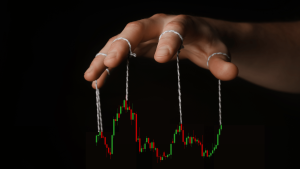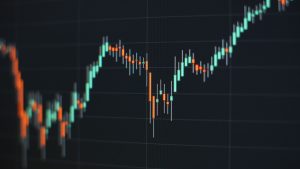The cryptocurrency market is known for its cyclical nature, where periods of rapid growth are followed by corrections or prolonged downturns. Understanding these market cycles is essential for traders and investors looking to time their entries and exits effectively. Unlike traditional financial markets, crypto is driven by unique factors such as Bitcoin halvings, institutional adoption, and evolving regulations. By analyzing historical trends, market psychology, and key indicators, investors can gain insights into when the best opportunities arise.
At EPIQ Trading Floor, we equip traders with the tools and knowledge to navigate these cycles successfully. Our exclusive mobile app provides real-time trade signals, member-only livestreams, and one-on-one coaching. Use code “BLOG” at checkout for 10% off your membership and start your risk-free 3-day trial today! Cancel anytime within 72 hours if you’re not satisfied.
Understanding Crypto Market Cycles
Just like traditional markets, the crypto space moves through predictable market cycles that consist of four main phases: accumulation, expansion, distribution, and decline.
The accumulation phase occurs after a bear market when prices have bottomed out and long-term investors begin buying at discounted prices. At this stage, the broader market remains skeptical, but institutional players and experienced traders start accumulating assets in anticipation of the next uptrend.
As the market gains momentum, it enters the expansion or bull market phase, characterized by increasing investor confidence, rising trading volumes, and substantial price appreciation. Media attention fuels FOMO (fear of missing out), and retail traders rush to participate, further driving demand.
Eventually, the market reaches its distribution phase, where prices peak, and early investors begin to take profits. Volatility increases, and signs of exhaustion emerge as new buyers struggle to sustain upward momentum.
The cycle then shifts into the decline or bear market phase, marked by sharp corrections, widespread panic selling, and prolonged price declines. Many traders exit the market, while smart investors prepare for the next accumulation phase, recognizing it as an opportunity to buy assets at lower prices.
Recognizing these phases helps traders align their strategies with market sentiment and avoid common pitfalls such as panic selling during corrections or buying at the peak of euphoria.

When is the Best Time to Invest in Crypto?
While predicting exact market tops and bottoms is impossible, historical data suggests that the best time to invest is during the accumulation phase—after a prolonged bear market when prices are undervalued and sentiment is negative.
One of the most important factors influencing crypto market cycles is the Bitcoin halving event, which occurs roughly every four years. Historically, Bitcoin halvings have triggered bull markets due to reduced supply and increasing demand. Many investors use these events as indicators for when to start accumulating assets.
Another useful metric is the Crypto Fear & Greed Index, which measures overall market sentiment. Extreme fear often signals a buying opportunity, while extreme greed suggests that a market correction may be imminent. Additionally, on-chain metrics, such as whale activity, exchange reserves, and network adoption, provide valuable insights into whether the market is in a bullish or bearish phase.
Investors should also pay attention to market corrections within a bull run. During previous cycles, crypto markets have experienced sharp 20-30% pullbacks before continuing their upward trajectory. These pullbacks often present great entry opportunities for those looking to accumulate assets at a discount.
Finally, institutional involvement plays a crucial role in determining market direction. When large-scale investors and corporations start allocating funds into crypto, it can signal the beginning of a new bullish trend. Keeping track of ETF approvals, regulatory developments, and major partnerships can help traders anticipate market movements.
Key Indicators to Watch During Market Cycles
Several indicators can help traders determine where the market stands in its cycle.
The Bitcoin Dominance Index is an important metric that shows Bitcoin’s share of the overall crypto market. When Bitcoin dominance rises, it often indicates a risk-off environment where traders move away from altcoins. A declining Bitcoin dominance, on the other hand, suggests an upcoming altcoin season where smaller assets outperform BTC.
On-chain metrics like whale activity, exchange inflows, and miner movements provide real-time data on investor behavior. For example, a surge in Bitcoin leaving exchanges could indicate accumulation, while a spike in exchange deposits may signal selling pressure.
Technical indicators such as the Relative Strength Index (RSI) and Moving Averages (MA) are also useful for identifying overbought and oversold conditions. The 200-day moving average is particularly significant—it has historically acted as a key support level in bull markets.
By combining these tools with an understanding of market cycles, investors can make more data-driven decisions rather than relying on speculation.
How to Avoid Common Market Cycle Mistakes
Many traders fall victim to emotional trading, chasing pumps at market tops and panic-selling during downturns. Instead of reacting to short-term fluctuations, investors should adopt a long-term strategy based on historical patterns and fundamental analysis.
A disciplined approach includes taking profits strategically rather than holding assets indefinitely in hopes of unlimited gains. Selling portions of a position during euphoric phases helps lock in profits and reduces exposure to inevitable corrections.
Diversification is another key strategy. Spreading investments across multiple assets and sectors minimizes risk and ensures that gains in one area can offset losses in another. Relying too heavily on a single asset leaves traders vulnerable to unexpected market movements.
Using stop-loss orders can also protect capital in volatile conditions. Setting predefined exit points prevents emotional decision-making and helps traders manage risk effectively.

Final Thoughts
Crypto market cycles are inevitable, but those who understand them can capitalize on opportunities rather than falling prey to market hype. By recognizing accumulation phases, monitoring key indicators, and staying informed about macroeconomic factors, traders can position themselves for success.
At EPIQ Trading Floor, we provide the tools and education needed to navigate market cycles confidently. Our exclusive mobile app gives traders access to real-time trade signals, private livestreams, and one-on-one coaching sessions. Use code “BLOG” at checkout for 10% off your membership and start your risk-free 3-day trial today. Cancel anytime within 72 hours if you’re not satisfied.
Disclaimer:
This content is for educational purposes only and does not constitute financial advice. Cryptocurrency trading involves risks, and investors should conduct their own research before making financial decisions.










Responses